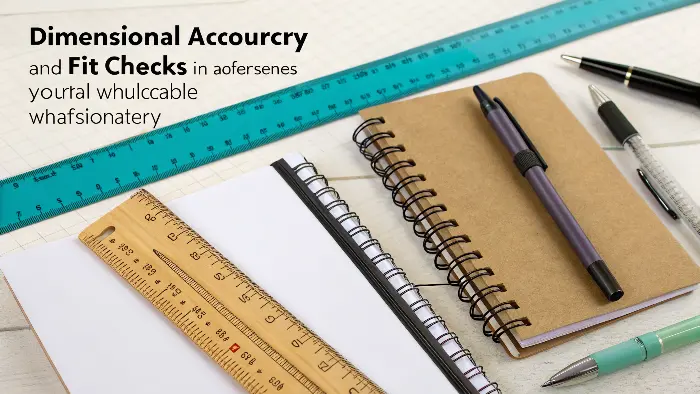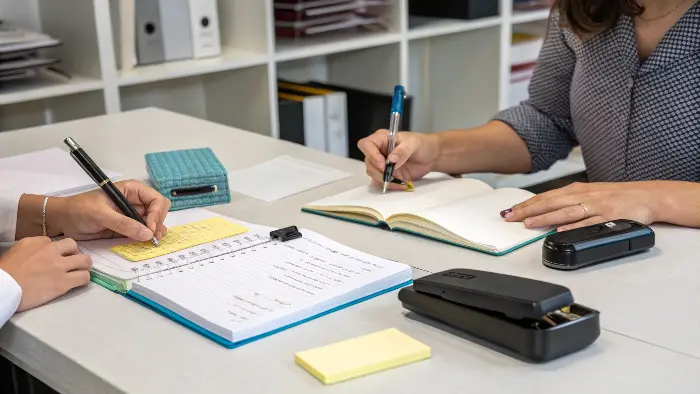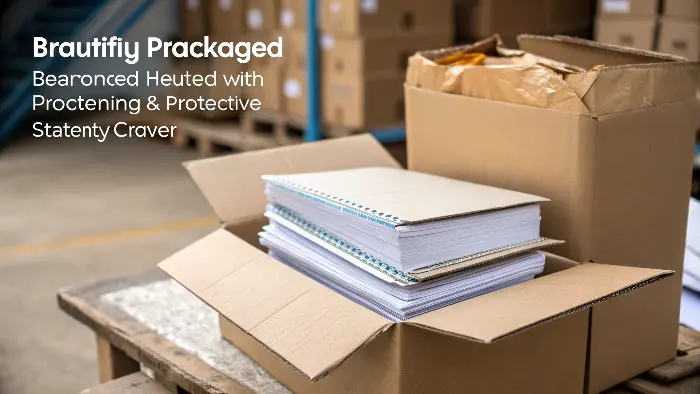Sourcing wholesale stationery but worried about quality? Inconsistent products can really hurt your brand, and let’s be honest, your bottom line. We’re here to talk about the key QC checkpoints that can save you a lot of trouble.
Effective quality control in wholesale stationery sourcing involves rigorous visual checks, dimensional accuracy, performance tests, safety compliance, and robust packaging. Establishing clear QC processes with manufacturers like Panoffices is vital for importers. This helps ensure products meet expectations consistently.
You know, when you’re importing wholesale stationery, getting the quality right is everything. I mean, everything. I’ve talked to so many buyers like Michael, over in Germany, and this is always top of their list. If the pens don’t write, or the notebooks fall apart, well, that’s not good for anyone. Here at Panoffices, we’ve learned a thing or two about making sure what leaves our partners’ factories is top-notch. It’s not just about ticking boxes; it’s about building trust and delivering products that people genuinely love to use. So, I want to walk you through some of the checkpoints we think are super important. These are the things that can make or break your import business.
Why is a Thorough Visual Inspection the First Line of Defense in Stationery QC?
Spotting defects early saves major headaches later, believe me. Visual checks seem basic, almost too simple, right? But are they being done right, and thoroughly? We show you what to look for.
A thorough visual inspection is your first critical step. It involves checking for cosmetic flaws, color consistency, correct branding, and overall finish. This ensures the stationery meets aesthetic standards before anything else matters.
When we talk about visual inspection, I mean really looking at the product. It’s the first thing anyone does. Think about Michael – he’s got a keen eye for design, and his customers expect a certain level of polish. If a notebook cover is scratched, or the color of a pen batch is slightly off, it screams low quality. We always start here. It’s like when you’re buying fruit; you pick the one that looks good, right? Same idea. We train our teams to look for things like scratches, dents, smudges, or any imperfections on the surface. Color consistency is another big one. If you order 1,000 blue pens, they should all be the same blue. Not fifty shades of it! And branding – logos need to be crisp, correctly placed, and perfectly printed. I remember one time, early in my career, we had a shipment of journals where the debossed logo was slightly off-center on about 10% of them. It was a small thing, but it mattered. We learned a lot from that. It’s these little details that add up to the overall perception of quality. A good visual check weeds out these obvious problems before they even get a chance to become your problem. It’s about setting a high bar from the very beginning. It also covers things like checking for excess glue, ensuring edges are smooth, and that there are no weird odors. It’s a comprehensive once-over that really sets the stage for deeper checks.
How Crucial are Dimensional Accuracy and Fit Checks for Wholesale Stationery?
Ever had wrong-sized notebooks or ill-fitting pen caps? It’s so frustrating! Dimensional errors can make stationery completely useless. Precision here matters a whole lot more than you might think.
Dimensional accuracy ensures every component fits and functions as intended. From notebook sizes to pen cap seals, precise measurements prevent usability issues and customer dissatisfaction. This is absolutely key for functional stationery.

After we’ve made sure everything looks good, we need to check if it’s made right. This is where dimensional accuracy comes in. It sounds a bit technical, but it’s pretty straightforward. Does the A5 notebook actually measure A5? Does the pen refill fit snugly inside the pen barrel? Do the holes in the punched paper line up with a standard binder? These things are critical. For someone like Michael, who is developing product lines for a European market, these standards are non-negotiable. European customers, in my experience, have very high expectations for functionality. If a folder tab is too short, or a planner insert doesn’t fit the binder, it’s a direct hit to usability. We use precise measuring tools – calipers, rulers, templates – to check these things. It’s not just about individual components either. It’s about how they fit together. A pen cap should click on securely, not too loose, not too tight. The lid of a desk organizer should sit flush.
Here are some common examples we always look out for:
Common Dimensional Checks in Stationery
| Item | Specific Check | Why It’s Important |
|---|---|---|
| Notebooks | Overall size (A4, A5, etc.), page count, ruling | Usability, compatibility with accessories |
| Pens/Pencils | Length, diameter, refill compatibility, cap fit | Comfort, functionality, preventing leaks/drying out |
| Folders | Size, tab dimensions, pocket depth | Document fit, organization efficiency |
| Binders | Ring spacing, overall dimensions | Paper fit, capacity, ease of use |
| Desk Organizers | Compartment sizes, overall footprint | Practicality, space efficiency |
I recall a situation where a client ordered a batch of custom-sized journals. The factory made a tiny error in the width – just a couple of millimeters – but it meant the elastic closure band was too tight and warped the cover over time. It was a small miss with a big impact. That’s why we, at Panoffices, emphasize getting these specs right from the start and checking them rigorously. It prevents those "oops" moments that can be costly and damage your reputation. It’s about making sure the product works exactly as the end-user expects it to. No surprises, just satisfaction.
What Does Effective Performance Testing Really Entail for Stationery Items?
So, the product looks good and it’s the right size. But does that pen actually write smoothly? Will those staples jam the stapler on the first try? Performance testing is what separates good stationery from bad, plain and simple.
Effective performance testing verifies that stationery items work as expected. This includes checking pen ink flow, notebook paper quality for bleed-through, stapler functionality, and adhesive strength of sticky notes, among other things.

This is where the rubber meets the road, or maybe I should say, where the pen meets the paper! Performance testing is all about ensuring the stationery does what it’s supposed to do, and does it well. It’s one thing for a pen to look beautiful; it’s another for it to write like a dream. For Michael and his customers, functionality is paramount. A fancy pen that skips or a notebook where the ink bleeds through to the other side? That’s a quick way to lose a customer. At Panoffices, we take this very seriously. We don’t just glance at things; we actually use them, or simulate use. For pens, we’ll do writing tests – checking for smooth ink flow, consistent lines, and no skipping. We’ll test different paper types with them. For notebooks, we look at paper weight and quality. Can you write on both sides without issue? How does it hold up to different types of pens or markers? Do the pages tear out cleanly if it’s a perforated pad? For things like scissors, we check if they cut cleanly through various materials. For staplers, we test for jamming and consistent staple penetration. Sticky notes? We check the adhesive. Does it stick well, but also remove cleanly without leaving residue or tearing the paper? It’s this kind of practical, hands-on testing that really reveals the true quality of a product. We try to think like the end-user. What would frustrate them? What would delight them? It’s not just about a single test either; for some items, we might do repetitive stress tests to see how they hold up over time. It’s about building that confidence that the product won’t just work once, but will be a reliable tool.
How Can Importers Ensure Product Safety and Regulatory Compliance for Stationery?
Ever thought about what’s in that colorful marker or the plastic of that ruler? Toxic materials or unsafe designs can lead to recalls, legal trouble, and worst of all, harm. Safety isn’t optional; it’s a must.
Importers must ensure stationery meets all relevant safety standards and regulations. Think EN71 for items that might be seen as toys, or REACH in Europe for chemical safety. This involves material checks and proper certifications.
This is a big one, and honestly, it’s something that can keep importers up at night. Product safety and regulatory compliance are absolutely non-negotiable, especially when you’re sourcing from overseas. For someone like Michael, who operates in Germany, adhering to strict European standards like REACH (which deals with chemical substances) and EN71 (for toy safety, which can sometimes apply to children’s stationery) is critical. It’s not just about avoiding fines or recalls; it’s about protecting consumers and his brand’s reputation. Here at Panoffices, we understand this deeply. We work with our manufacturing partners to ensure that the materials used are safe and compliant. This often involves requesting Material Safety Data Sheets (MSDS) for things like inks and plastics, and sometimes even arranging for third-party lab testing to verify compliance. We have to be really careful with items aimed at students or children – are there small parts that could be a choking hazard? Are the paints and plastics non-toxic? These are questions we ask constantly. It’s about due diligence. We also keep an eye on labeling requirements. Does the product need specific warnings or information about its composition? Different markets have different rules, and it’s our job to help our clients navigate that. I always advise clients to be very clear about the target market for their stationery, so we can ensure the right standards are being met. It’s an area where you just can’t afford to cut corners. The potential downsides are just too significant. It’s about peace of mind for everyone involved – us, our clients like Michael, and ultimately, the end-user.
Why is Robust Packaging a Non-Negotiable Part of Stationery Quality Control?
Picture this: your perfectly crafted stationery arrives, but it’s damaged in transit or looks like it’s been through a warzone. Packaging is your last quality checkpoint and the very first impression. Don’t overlook it!
Robust packaging protects stationery during transit, prevents damage, and contributes to the product’s presentation. It’s a crucial QC element ensuring items arrive in perfect condition and uphold your brand image.

Okay, so your stationery has passed all the visual, dimensional, performance, and safety checks. Fantastic! But if it gets damaged on its long journey to your warehouse or your customer, all that hard work can be for nothing. That’s why robust packaging is such a critical, yet sometimes overlooked, part of quality control. I always tell people: think of packaging as the final handshake. It needs to be firm and confident. For Michael, whose products will end up on retail shelves in Europe, the packaging isn’t just about protection; it’s also part of the brand experience. It needs to look good and be practical. We consider several things here. First, the inner packaging – are individual items wrapped or boxed appropriately to prevent scuffing or breakage? Are sets bundled securely? Then, there’s the outer carton. Is it strong enough to withstand the bumps and drops of shipping? Are there enough void-fill materials inside to stop items from shifting around? We’ve seen it all – crushed boxes, water damage, items broken because they weren’t cushioned properly. It’s heartbreaking when good products are ruined by poor packaging. We also pay attention to labeling on the cartons – clear product codes, quantities, handling instructions. This helps with warehouse management on your end. For retail-ready products, we also ensure the consumer-facing packaging is perfect – no misprints, good quality materials, and easy to open (but not too easy!). It’s a balance. And with Panoffices, since we manage global fulfillment, we are very particular about export-worthy packaging. It has to protect the goods from our factory to its final destination, wherever in the world that might be.
What are the Benefits of Establishing Direct Quality Control Processes with Manufacturers?
Tired of nasty quality surprises when your shipment finally arrives? Working directly with your manufacturer on QC isn’t just a smart move; it’s absolutely essential for achieving consistent quality.
Establishing direct QC processes with manufacturers like Panoffices allows for clear communication of standards, early problem detection, and collaborative quality improvement. This ensures consistent product excellence for importers.

This last point is really about partnership. You can have all the checklists in the world, but if you’re not working closely with your manufacturer, you’re always going to be playing catch-up. For an experienced buyer like Michael, having a transparent and collaborative relationship with his suppliers, like us at Panoffices, is key to his success. When we talk about establishing direct QC processes, it means sitting down (sometimes literally, sometimes virtually!) and agreeing on what "good" looks like. What are the acceptable quality limits (AQLs)? What are the critical-to-quality points for each product? How will inspections be conducted – during production, pre-shipment? This isn’t about being a "police officer" with the factory. It’s about building a shared understanding and a shared commitment to quality. I’ve found that when manufacturers are part of the QC planning, they take more ownership. They understand why certain things are important, not just what needs to be checked. This often leads to them catching potential issues themselves, even before we do an official inspection. It’s about proactive quality assurance, not just reactive quality control. For example, we often share detailed specification sheets and even physical "golden samples" that represent the approved standard. This leaves no room for ambiguity. Regular communication is also vital. If we spot a recurring issue, we work with the factory to understand the root cause and implement corrective actions. It’s a continuous improvement cycle. This kind of open dialogue and partnership is what transforms a supplier from just a vendor into a valuable extension of your own team. It’s how we, at Panoffices, strive to work with all our clients, helping them bring thoughtful, premium stationery to every desk, consistently.
Conclusion
Quality control in stationery sourcing isn’t just a step; it’s a mindset. Implement these checkpoints consistently, and you’ll protect your brand and delight your customers. Panoffices is here to help you nail it every time.

